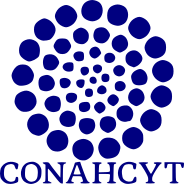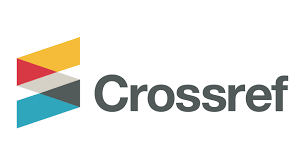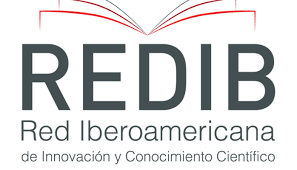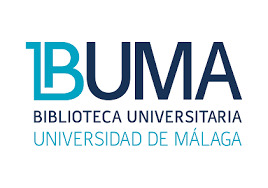Morphometric analysis of Agave sensu stricto (Asparagaceae: Agavoideae) in Veracruz and adjacents areas of Puebla, Mexico
DOI:
https://doi.org/10.18387/polibotanica.56.3Keywords:
cluster, maguey, morfometry, multivariate analysis, principal componentsAbstract
Genus Agave includes diverse species of economic and cultural importance for Mexico. In the state of Veracruz there are different opinions about the taxa of this genus reported for the entity. This fact causes disparity in the available information on the richness of species in this genus. The objectives of this research were to identify the Agave species that are present in Veracruz, analyzing their morphological variability, as well as to determine the morphological characters which allow them to be recognized. A multivariate analysis was performed of 29 populations and 57 morphological characters subjected to a cluster analysis by means of the unweighted pair procedure with arithmetic mean (UPGMA) and the Euclidean distance coefficient. Thirty quantitative characters were used for a Principal Components Analysis (PCA). Analyses allows the recognition of 20 taxa of Agave corresponding to 17 species and three infraspecific taxa. The most important traits differentiating populations according to PCA analysis are flower length, length of the terminal spine canaliculus, anther length, length of the scape bracts, length of the perigonium tube, length of the outer tepal and of the filament of the stamen; and the width of the ovary. Multivariate analyses support the recognition of 17 species of Agave s.s. in Veracruz. The high percentages of variation in the floral characters considered support the use of flowers as important attributes for the classification and separation of Agave s.s. species.
References
APG IV, The Angiosperm Phylogeny Group. (2016). An update of the Angiosperm Phylogeny Group classification for the orders and families of flowering plants: APG IV. Botanical Journal of the Linnean Society, 181(1), 1-20. http://doi.org/10.1111/boj.12385
Arroyo-Cosultchi, G., Terrazas, T., Arias, S. y López-Mata, L. (2010). Delimitación de Neobuxbaumia mezcalaensis y N. multiareolata (Cactaceae) con base en análisis multivariados. Boletín de la Sociedad Botánica de México, 86, 53-64.
Avendaño-Arrazate, C.H., Iracheta-Donjuan, L., Gódinez-Aguilar, J.C., López-Gómez, P. y Barrios-Ayala, A. (2015). Caracterización morfológica de Agave cupreata, especie endémica de México. Phyton, 84, 148-162.
Barrientos, G., Esparza, E.L., Segura, H.R., Talavera, O., Sampedro, M.L. y Hernández, E. (2019). Caracterización morfológica de Agave angustifolia y su conservación en Guerrero, México. Revista Mexicana de Ciencias Agrícolas, 10(3), 655-668. http://doi.org/10.29312/remexca.v10i3.1554
Castro-Castro, A., Rodríguez, A., Vargas-Amado, G. y Ramírez-Delgadillo, R. (2010). Variación morfológica del género Prochnyanthes (Agavaceae). Acta Botánica Mexicana, 92, 29-49.
Cházaro-Basáñez, M.J. (1989). Agavaceae del centro de Veracruz y zona limítrofe con Puebla. Cactáceas y Suculentas Mexicanas, 34(1), 3-16.
Cházaro-Basáñez, M.J., Jimeno-Sevilla, D., Van der Meer, P. y Van Roosbroek J. (2008). Agave warelliana (Agavaceae), a new record from Veracruz, Mexico. International Cactus Adventures, 78, 24-30.
Cházaro, M. (1997). Aclaración sobre Agave wendtii. Cactáceas y Suculentas Mexicanas, 42(4), 95.
Colunga-García Marín, P. (1998). Origen, variación y tendencias evolutivas del henequén (Agave fourcroydes Lem.). Boletín de La Sociedad Botánica de México, 62, 109-128. http://doi.org/10.17129/botsci.1555
Cronquist, A. y Takhtajan, A.L. (1981). An Integrated System of Classification of Flowering
Plants. Columbia University Press. https://books.google.com.mx/books?id=EB6qflbmcrwC
Eguiarte, L. E., Souza, V. y Silva-Montellano, A. (2000). Evolución de la familia Agavaceae:
Filogenia, biología reproductiva y genética de poblaciones. Botanical Sciences, 66, 131-
151. http://doi.org/10.17129/botsci.1618
Figueredo-Urbina, C.J., Casas, A. y Torres-García, I. (2017). Morphological and genetic divergence between Agave inaequidens, A. cupreata and the domesticated A. hookeri. Analysis of their evolutionary relationships. PLoS ONE, 12(11), 1-24. http://doi.org/10.1371/journal.pone.0187260
Figueredo, C.J., Casas, A., Colunga-García Marín, P., Nassar, J.M. y González-Rodríguez, A. (2014). Morphological variation, management and domestication of “maguey alto” (Agave inaequidens) and “maguey manso” (A. hookeri) in Michoacán, México. Journal of Ethnobiology and Ethnomedicine, 10(1), 1-12. http://doi.org/10.1186/1746-4269-10-66
García-Mendoza, A. (2002). Distribution of Agave (Agavaceae) in Mexico. Cactus and Succulent Journal, 74(4), 177-187.
García-Mendoza, A. (2011). Agavaceae. En Flora del Valle de Tehuacán-Cuicatlán, Fascículo 88 (pp. 1-95). Instituto de Biología, Universidad Nacional Autónoma de México.
García Mendoza, A.J., Cházaro Basañez, M.J., Nieto Sotelo, J., Sánchez Teyer, L.F., Tapia Campos, E., Gómez Leyva, J.F., Tamayo Ordóñez, M., Narváez Zapata, J.A., Rodríguez Garay, B., Palomino Hasbach, G.A., Martínez Ramón, J., Martínez Rodríguez, J.C., Quiñones Aguilar, E.E., Rincón Enríquez, G., Beltran García, M.L., Quí Zapata, J.A., Guzmán Mendoza, R., Mercado Flores, Y., Ragazzo Sánchez, J.A., Calderón Santoyo, M. y Gutiérrez Mora, A. (2017). Agave. En A. Gschaedler (Ed.), Panorama del aprovechamiento de los Agaves en México (pp. 15-68). Centro de Investigación y Asistencia en Tecnología y Diseño del Estado de Jalisco A.C. Guadalajara, México.
Gentry, H.S. (1982). Agaves of Continental North America. The University of Arizona Press.
Chung, M.G., Jones, S.B., Hamrick, J.L. y Chung, H.G. (1991). Morphometric and isozyme analysis of the genus Hosta (Liliaceae) in Korea. Plant Species Biology, 6(1), 55–69. http://doi.org/10.1111/j.1442-1984.1991.tb00210.x
Gil-Vega, K.C., Díaz-Quezada, C.E., Nava-Cedillo, A., García-Mendoza, A. y Simpson, J. (2007). Análisis AFLP del género Agave refleja la clasificación taxonómica basada en caracteres morfológicos y otros métodos moleculares. En P. Colunga-García Marín, A. Larqué, L. Eguiarte y D. Zizumbo-Villarreal (Eds.), En lo ancestral hay futuro: del tequila, los mezcales y otros agaves (pp.23-40). Centro de Investigación Científica de Yucatán A.C. México.
Gonzalo, R., Aedo, C., Nickrent, D.L. y García, M.A. (2012). A numerical taxonomic investigation of Stipa Sect. Smirnovia and S. Sect. Subsmirnovia (Poaceae). Systematic Botany, 37(3), 655-670.
Gutiérrez J., Terrazas, T. y Luna-Vega, I. (2017). Morphometric analysis of Milla biflora (Asparagaceae : Brodieaoideae), with an identification key for Milla. Plant Ecology and Evolution, 150(1), 76-86.
Jiménez-Pérez, N.C. y Lorea-Hernández, F.G. (2009). Identity and delimitation of the American species of Litsea Lam. (Lauraceae): a morphological approach. Plant Systematics and Evolution, 283, 19-32. https://doi.org/10.1007/s00606-009-0218-0
Jimeno-Sevilla, D. (2010). Especies endémicas: Agave wendtii Cházaro. En A. Gómez-Pompa, T. Krömer y R. Castro-Cortés (Eds.), Atlas de la flora de Veracruz: un patrimonio natural en peligro (pp. 100-102). Gobierno del Estado de Veracruz, Comisión del estado de Veracruz para la Conmemoración de la Independencia Nacional y la Revolución Mexicana, México.
McCune, B. y Mefford, M.J. (2011). PC-ORD. Multivariate Analysis of Ecological Data. MjM Software.
Mora-López J.L., Reyes-Agüero, J.A., Flores-Flores, J.L., Peña-Valdivia, C.B. y Aguirre-Rivera, J.R. (2011). Variación morfológica y humanización de la sección Salmianae del género Agave. Agrociencia, 45(4), 465-477.
Palacio, F. X., Apodaca, M.J. y Crisci, J.V. (2020). Análisis multivariado para datos biológicos: teoría y su aplicación utilizando el lenguaje R. Fundación de Historia Natural Félix de Azara, Ciudad Autónoma de Buenos Aires.
Parker, K.C., Trapnell, D.W., Hamrick, J.L. y Hodgson, W.C. (2014). Genetic and morphological contrasts between wild and anthropogenic populations of Agave parryi var. huachucensis in south-eastern Arizona. Annals of Botany, 113(6), 939-952. http://doi.org/10.1093/aob/mcu016
Peirson, J.Z., Cantino, P.D. y Ballard Jr, H.D. (2006). A taxonomic revision of Collinsonia (Lamiaceae) based on phenetic analyses of morphological variation. Systematic Botany, 31(2), 398-409.
Poulsen, A.D y Nordal, I. (2005). A phenetic analysis and revision of Guineo-Congolean rain forest taxa of Chlorophytum (Anthericaceae). Botanical Journal of the Linnean Society, 148, 1-20. http://doi.org/10.1111/j.1095-8339.2005.00386.x
Radford, A.E., Dickinson, W.C., Massey, J.C. y Bell, C.R. (1974). Vascular plant systematics. Harper & Row. https://books.google.com.mx/books?id=fMcnAAAAYAAJ
Ritchie, W.D. (2012). Taxonomy and DNA Barcoding in the Genus Manfreda (Salisb.) Asparagaceae. [PhD thesis, University of Arkansas].
Rodríguez-Garay, B., Lomelí-Sención, J.A., Tapia-Campos, E., Gutiérrez-Mora, A., García-Galindo, J., Rodríguez-Domínguez, J.M., Urbina-López, D. y Vicente-Ramírez, I. (2009). Morphological and molecular diversity of Agave tequilana Weber var. Azul and Agave angustifolia Haw. var. Lineño. Industrial Crops and Products, 29(1), 220–228. http://doi.org/10.1016/J.INDCROP.2008.05.007
Solano, E. (2000). Sistemática del género Polianthes L. (Agavaceae) [Tesis de Doctor en Ciencias, Universidad Nacional Autónoma de México].
Sosa, V y Gómez-Pompa, A. (1994). Lista florística. En V. Sosa (Ed.), Flora de Veracruz Fascículo 82. Instituto de Ecologia A.C., México y University of California, Riverside.
Stevens, P. F. (2001). Angiosperm Phylogeny Website, version 14. http://www.mobot.org/MOBOT/research/APweb/ (recuperado junio de 2018)
Thiede, J. (2001). Agavaceae. En U. Eggli (Ed.), Illustrated Handbook of Succulent Plants, Monocotyledons (pp. 5-102). Springer.
Thiede, J. (2014). A review of Agave ellemeetiana K. Koch (Asparagaceae/Agavaceae). Bradleya, 32(32), 146-163. http://doi.org/10.25223/brad.n32.2014.a7
Trelease, W. (1920). Amaryllidaceae. En Contributions from the United States National
Herbarium 23: 169). http://doi.org/Doi 10.1038/Ejcn.2010.91
Villaseñor, J.L. (2016). Checklist of the native vascular plants of Mexico. Revista Mexicana de Biodiversidad, 87, 559-902. http://doi.org/10.1016/j.rmb.2016.06.017
Downloads
Published
Issue
Section
License

Polibotánica by Departamento de Botánica de la Escuela Nacional de Ciencias Biológicas del Instituto Politécnico Nacional se distribuye bajo una Licencia Creative Commons Atribución-NoComercial-CompartirIgual 4.0 Internacional.




















